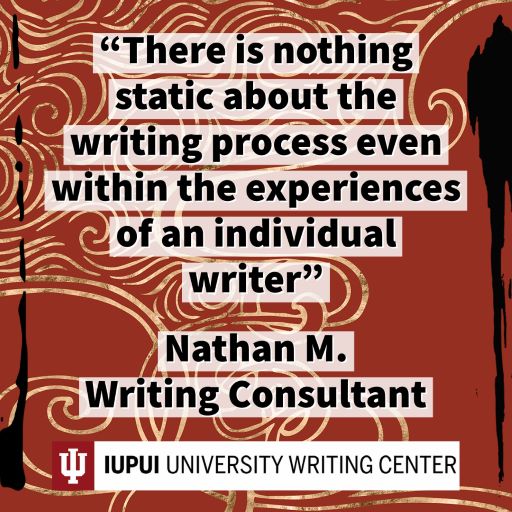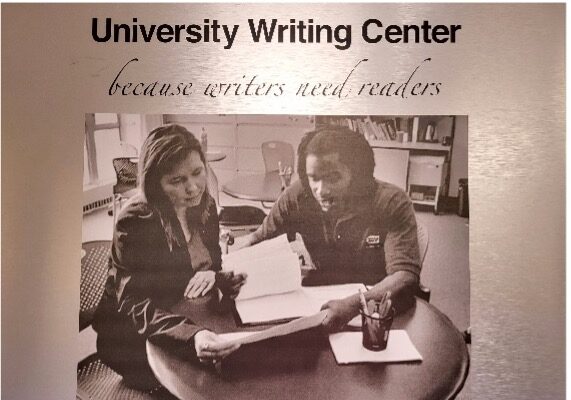
Resources for the Writing Process: What is the Writing Process? (Part 1 of 5) by Nathan Marquam
When I try to get writers to engage more thoughtfully with how their writing process works, overwhelmingly, the response I get is “I don’t have time to think about how I write—I have too much of it to do!” And indeed, the last thing that many students want is me giving them more reading and extra work outside of their existing courseload. But after a couple semesters of running the Write-on-Site program and talking to writers in many different disciplines every week, I’ve noticed that the conversation always seems to return to navigating the writing process.

This is the first in a series of blog posts that aims to collect various writing strategies, information, and approaches and break them down by what stage of the writing process they most directly pertain to. My aim here is to create a resource that writers can navigate easily to find the information they need, but that also provides a springboard for further exploration if desired. The approaches gathered here are an amalgamation of knowledge that I’ve gained from composition studies, my own lived experiences as a student, and tips I’ve picked up from other writers.
Breaking down the writing process into five linear sections is, of course, an imperfect approach; far from being linear, the writing process is often recursive and messy. One doesn’t simply move neatly from one stage to the next without any awkward in-betweens. Larger projects like theses and dissertations often contain sections that are in different stages of the writing process, for example. But this kind of broad categorization can be helpful to help you pinpoint what in your writing you could use support with, enabling you to find resources and new tactics to help.
Donald Murray, a well-known composition scholar, broke the writing process into three main stages: prewriting, writing, and rewriting. The way that a writer moves through these stages, however, is unique; Murray acknowledges that the amount of time a writer spends in each of these stages varies depending on their habits, personality, type of writing, etc (4). John Bean breaks the writing process down in a little bit more detail, with “expert academic writers” in mind:
- Starting point: perception of a problem.
- Exploration.
- Incubation.
- Writing the first draft.
- Reformulation or revision
- Editing. (Bean 30-31)
Bean’s stages 1-3 are contained within Murray’s definition of “prewriting,” and stages 5 and 6 in Bean’s model are referred to as “rewriting” in Murray’s model. And these are far from the only breakdowns of the writing process—there is no singular correct way to name each step that a writer brings their writing through. Within any model, there will be overlap and fluidity between the various stages. For example, where I tackle citations within the writing process varies depending on the nature of what I’m writing. If I’m writing a short response paper or a blog post, something under a thousand words that is guided largely by my observations and opinions, then I find myself thinking more in-depth about citations toward the end of my writing stage. If I’m writing a longer piece where larger pieces of the text are guided by other people’s research, however, my citations are a huge part of my prewriting stage—I often make outlines guided by quotes and ideas from various readings.
This is all to say that there is nothing static about the writing process even within the experiences of an individual writer, so my choice to organize this series of posts by stages of the writing process is an imperfect one. However, it provides a guiding structure that might better support writers in finding the information they need more quickly. And it invites people to think critically about their own writing processes.
Works Cited
Bean, John C. Engaging Ideas: The Professor’s Guide to Integrating Writing, Critical Thinking, and Active Learning in the Classroom. San Francisco: Jossey-Bass, 1996.
Murray, Donald. “Teach writing as a process not product.” The leaflet 71.3 (1972): 11-14

